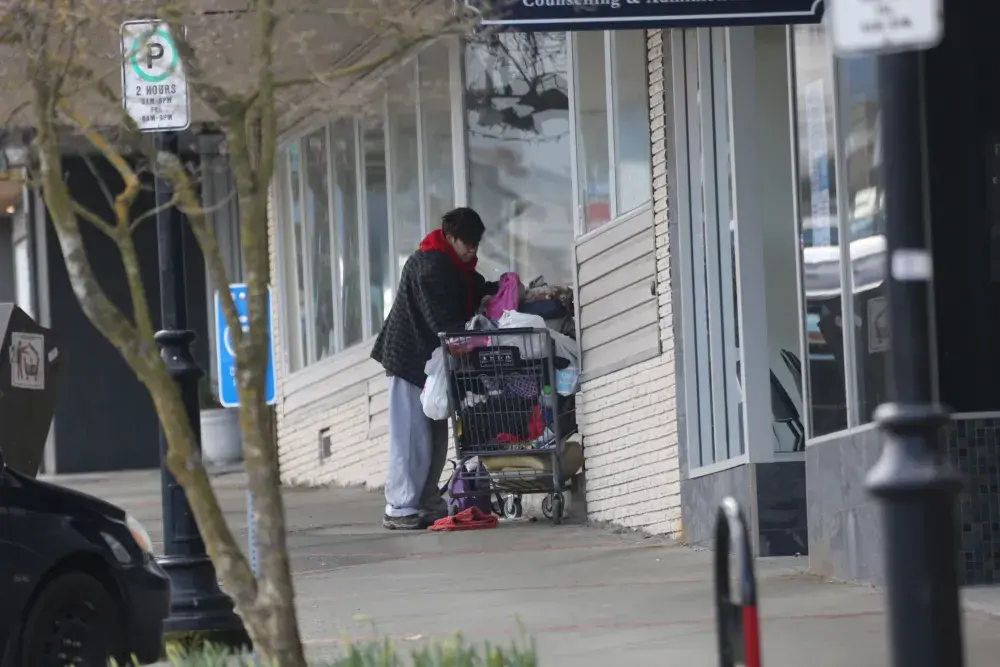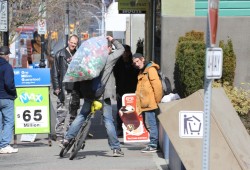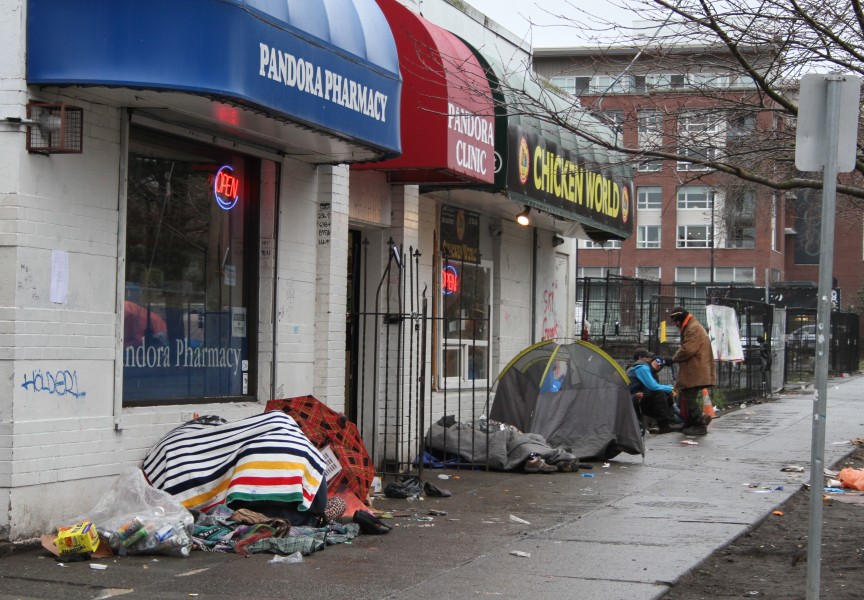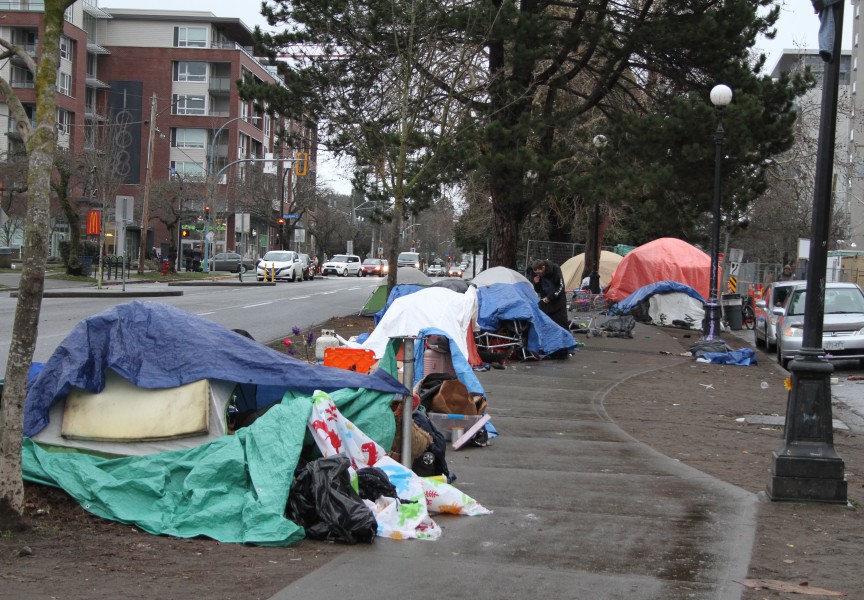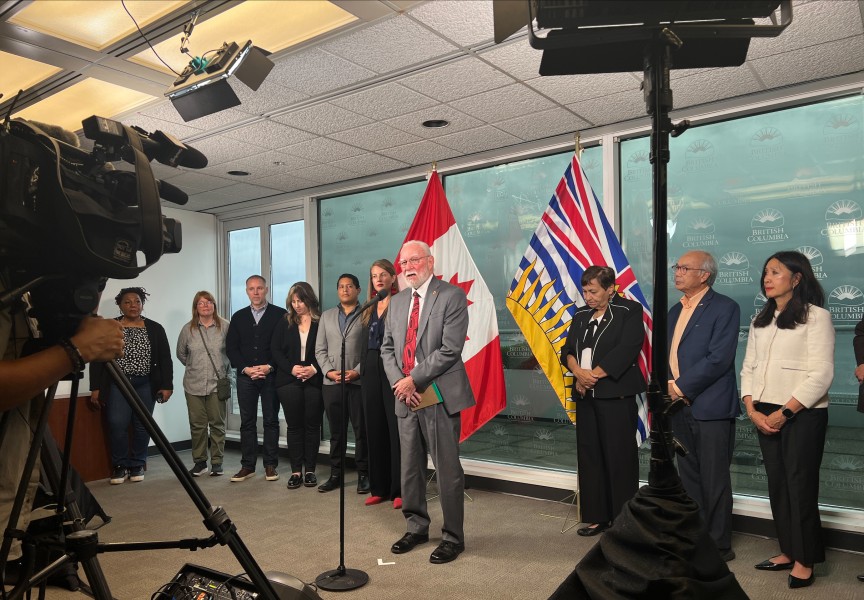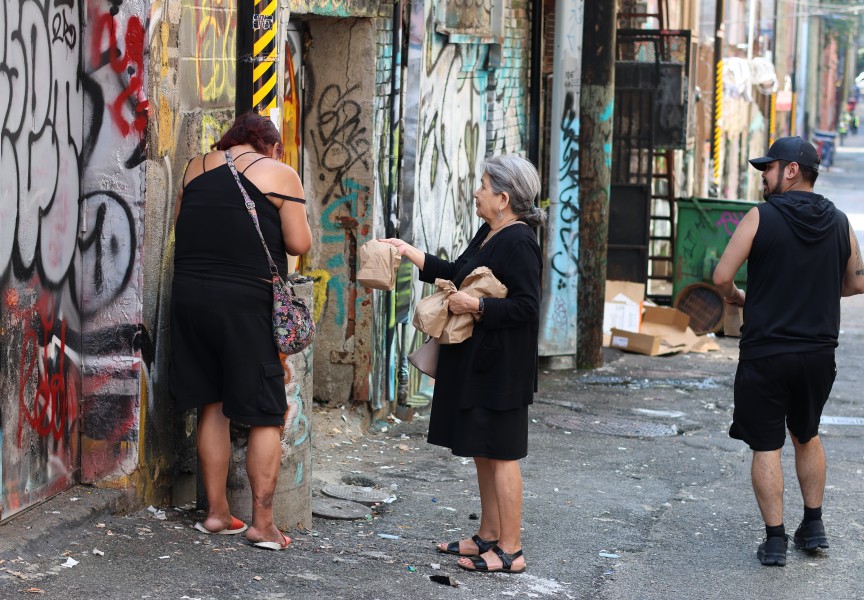Data from the 2023 province-wide point-in-time homeless counts has been released, showing Port Alberni as having a 30 per cent increase over the past two years.
Port Alberni’s point-in-time homeless count was conducted on May 1, 2023 over a 24-hour period. The count was led by an independent consultation in collaboration with the Homelessness Services Association of BC. The count showed 163 individuals who identified as homeless, compared to 125 in 2021. For the purpose of the count, an individual was defined as experiencing homelessness if they did not have a place of their own where they paid rent and could expect to stay for at least 30 days.
Thirty-eight per cent of respondents identified as sheltered and 62 per cent as unsheltered. Of the unsheltered individuals, 39 per cent said they slept outside the night of the count, 26 per cent at someone else’s place and 13 per cent in a vehicle.
Nineteen per cent of respondents were youth (under 25), 65 per cent were adults (25-54) and 16 per cent seniors (55 +). Sixty-one per cent identified as male, 36 per cent as female and three per cent as another gender identity.
Data from the 2023 count showed 66 per cent of respondents identified as Indigenous compared to 15 per cent of the census population. Of the Indigenous respondents, 84 per cent reported having been to residential school or being the descendants of former students.
Reasons for housing loss among respondents showed 35 per cent as not having enough income, 24 per cent due to substance use issues and 22 per cent as unfit/unsafe housing.
Ninety-six per cent of respondents reported having an income source. The most common sources were income assistance and disability benefit. Around 10 per cent reported a full or part-time job. Ninety-three per cent of respondents have been living in Port Alberni for more than one year and 39 per cent have always lived in the community.
All 20 communities included in the province-wide count saw an increase in the number of people experiencing homelessness since the last count.
“The results of these counts reinforce our belief that more needs to be done to help the most vulnerable members of our communities,” said Ravi Kahlon, minister of Housing, in a press release. “Because of global inflation cities across North America are seeing an increase in vulnerable populations. Through our new Belonging in BC homelessness plan, we’re creating the kinds of safe, secure homes and supports that are necessary to break the cycle of homelessness.”
Belonging in B.C. is part of a $19-billion housing investment by the B.C. government. Since 2017, the province has developed nearly 77,000 homes that have been delivered or are underway, including more than 7,000 supportive homes for people experiencing homelessness.
This year’s count for the Greater Vancouver area showed a 32 per cent increase to those experiencing homelessness compared to 2020. The point-in-time count conducted on March 7 counted 4,821 people who identified as homeless, 49 per cent of which were unsheltered and 64 per cent were sheltered.
Thirty-three per cent of those respondents identified as Indigenous, compared with two per cent of the Census population of Vancouver. The age breakdown for the Greater Vancouver area respondents show eight per cent as under 25, 70 per cent aged 25-54 and 22 per cent age 55 and older.
Reasons for housing loss among respondents included not enough income (35 per cent), substance use issue (24 per cent) and mental health issues (16 per cent). Fifteen per cent of respondents said their housing was lost due to the Covid-19 pandemic.
During a question period in the provincial legislature this month, MLA for West Vancouver-Capilano, Karin Kirkpatrick, questioned minister Kahlon and the NDP government on why homelessness is now at its worst.
“The 2023 homeless count in Greater Vancouver is in and it’s damning. The highest level of homelessness ever, up a staggering 34 per cent since 2017,” Kirkpatrick said. “The evidence is on our streets for all to see. The NDP has failed. Despite racking up the largest deficit in B.C.s history, homelessness has skyrocketed under this NDP government. It’s the NDP’s new normal.”
The provincial government released their 2022 Poverty Reduction Strategy annual report this month, which details actions in priority areas, such as housing, education, child care and employment supports.
Key actions in the report to help reduce poverty in 2022 included doubling the number of community integration specialists working with those experiencing, or at risk of, homelessness and providing complex-care housing to address the needs of people who have overlapping mental-health challenges, substance-use issues, trauma and acquired brain injuries.
In addition, the province released the Declaration Act Action Plan, which includes the mandate to incorporate Indigenous experiences and knowledge of poverty and well-being into ongoing poverty-reduction efforts.
“We are committed to delivering results that everyone in B.C. can see and feel. The Declaration Act Action Plan will help get us there,” said Murray Rankin, minister of Indigenous Relations and Reconciliation, in a press release. “The plan, which contains 89 actions, commits the province to listen, learn and incorporate Indigenous Peoples’ perspectives into all services and supports that are meant to lift people up and out of poverty.”

